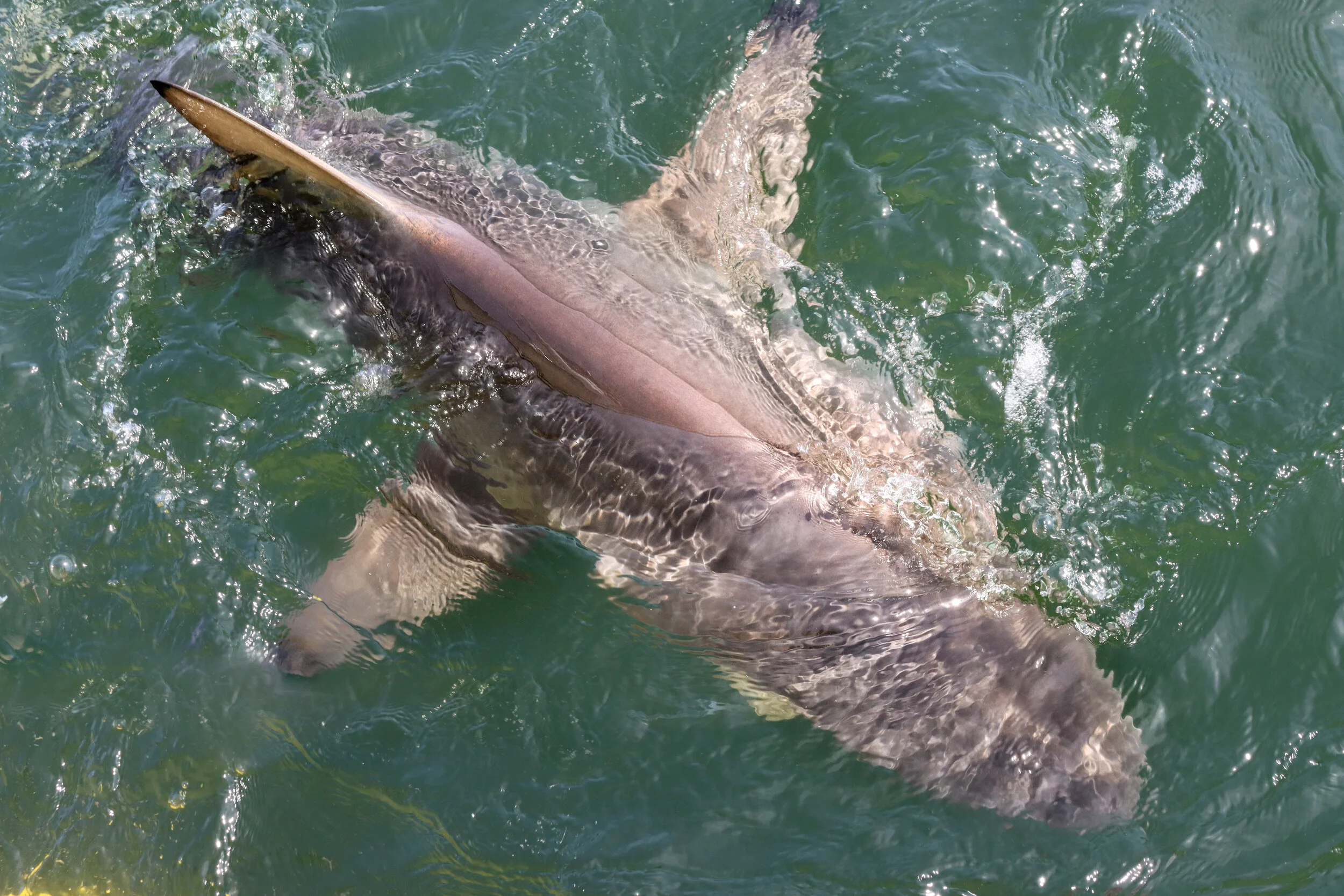Long Island’s Winter Visitors: Some motivation to brave the cold and get outside!
Featuring the Photography of Shane Etter (@BigOlMrKanish)
Written by Rich Nardo
Each winter, Long Island plays hosts to a spectacular array of visitors from the north. The chance to encounter one of these seasonal species is enough to get wildlife lovers and photographers to brave the icy island winds and return to the beaches and state parks they frequent in warmer months. In this article, we’re taking a look at a few of these cold weather Long Islanders through the photography of the super talented Shane Etter (@BigOleMrKanish). I’ve had the pleasure to work with Shane on three other blogs - Raptors of Long Island, Owls of Long Island, and the Oral Account of Striper vs Bluefishing - and it’s always an honor to get to feature Shane’s work. Make sure to follow him on Instagram if you don’t already!
We’ve highlighted a handful of species below, but there are plenty of additional winter pilgrims that we get on Long Island when the weather dips and I encourage you to do some more research!
The Snowy Owl
The Snowy Owl is perhaps the highest profile winter visitor we get on Long Island. Sightings have become more common in recent years, and Long Island bird enthusiasts and photographers look forward to their return each December. They live in the high arctic tundras for most of the year but, for a few freezing months, they make the shoreline dunes of Long Island part of their winter hunting grounds. The number that choose to move south of the Canadian border in the winter varies from year to year and it is believed to be related to the prey populations in their normal northern range. That being said, their migratory patterns are not well understood.
While this applies to all wildlife, it is of particular importance to make mention of how important it is to respect snowy owls and not disturb them if you choose to seek them out. Keep your distance and don’t “chase” these raptors. This causes undue stress and can tire them out to the point where they have difficulty maintaining the energy needed to hunt.
For more on Snowy Owls, please check out another blog that Shane and I worked on together, Owls of Long Island Through the Lens of Shane Etter.
The Dovekie: A Penguin on Long Island, really?
Well, no...not really. Dovekies, or LIttle Auks, are part of the family Alcidae (more commonly referred to as Auks), which are often referred to as the “Penguins of the North” due to the similarity in their appearances: black and white plumage, stout bodies, and set-back legs. Despite their abundance in the far North, relatively few bird watchers have had the chance to see them because of the remote nature of their habitat for most of the year. This winter, two ntvli friends, Tim Regan (photo of Tim’s Dovekie) and Shane Etter (photo of Shane’s dovekie) had a rare Long Island encounter with one on separate occasions. While seeing one here is rare, it’s not unheard of as we are at the very southern tip of their winter migration. What makes them a rare find is the fact that dovekies tend to stay miles and miles off shore when visiting this far south.
A dovekie sighting in our area is usually a sign that something is not right. Little Auks are sometimes pushed inland by strong, sustained easterly winds that make normal feeding grounds treacherous and force weakened birds down the coast and landward. The largest such case ever recorded came in the winter of 1932-1933, when a large number of dovekies were lost on the streets of New York City and an even larger amount washed up along the entire eastern seaboard, from Nova Scotia down to Florida.
In terms of appearance, AllAboutBirds.org describe them as looking like flying billiard balls with whirring wings in flight. They’re expert swimmers and can dive to depths of 100 feet as they hunt zooplankton.
Winter Waterfowl - Ducks
Long Island plays host to over three dozen types of migratory waterfowl each winter, making it a special time of the year for hunters, birdwatchers, photographers and wildlife enthusiasts of all sorts. The fact that our ponds, lakes, harbors, bays, and near-shore ocean beaches host so many ducks, geese, and swans this time of year make it one of the premier waterfowl viewing destinations in North America.
Long-Tailed Duck
All year long, we’re lucky enough to experience a few beautiful species such as mallards and mute swans, but the diversity of bird - from long-tailed and harlequin ducks to Canada geese, brants and Trumpeter swans - are enough to draw people out of their cozy homes to explore the outdoors despite the biting Long Island winter weather.
While ducks get most of the attention, several “exotic” geese, such as the Barnacle and Pink-footed geese have become more regular visitors to the area. Believe it or not, even the Canada Goose that are seemingly everywhere on Long Island have developed an interesting twist. A new subspecies called the Cackling Goose has developed. The Cackling Goose can be spotted by its smaller body and shorter neck making it look almost like a cross between the traditional Canada Goose and another Long Island cold weather staple, the brant.
One area of particular importance when it comes to duck migration is the Oyster Bay National Wildlife Refuge. Here you’ll be able to find over 23 species of waterfowl such as black duck, gadwall, greater scaup, bufflehead, long-tailed ducks, American widgeon, green-winged teal, red-breasted mergansers, and common goldeneyes. In one survey during the winter a few years back, a reported 20,000 ducks were found making their home on Oyster Bay.
Black Scoter
Harbor Seals
Harbor Seals have become more and more common around Long Island in the winter - everywhere from the North Fork to the western south shore beaches of Jones and Long Beach and into Queens. Harbor seals are the most abundant of the five species of seals that make Long Island their winter home (alongside grey, harp, hooded, and ringed seals) and they account for roughly 95% of the pinnipeds we see in our waters. All of these species belong to the True Seal family meaning they have a small flap of skin that closes over their ear opening when dive, short and haired front flippers featuring large claws, and webbed hind flippers that serve to propel them through the water at up to 12 knots (15 mph).
References:
The North Forker: https://northforker.com/2016/01/winter-waterfowl-north-fork-10-great-photos/
East Hampton Star: https://www.easthamptonstar.com/nature/202026/nature-notes-winter-waterfowl
Greater Long Island: https://bayshore.greaterlongisland.com/2018/03/07/35233-why-l-i-is-one-of-the-premier-waterfowl-viewing-locations-in-north-america/
The DEC NY Website: https://www.dec.ny.gov/outdoor/40550.html
Fire Island and Beyond: https://fireislandandbeyond.com/long-island-wildlife-bird-of-the-week-dark-eyed-junco/#:~:text=Migration%20takes%20place%20during%20March,part%20of%20the%20sparrow%20family
The Audubon Society Field Guide: https://www.audubon.org/field-guide/bird/snowy-owl
All About Birds (Dovekie): https://www.allaboutbirds.org/guide/Dovekie/overview
The FWS Website: https://www.fws.gov/refuges/profiles/WildHabitat.cfm?ID=52563%20
Fire Island and Beyond (Seals of Long Island): https://fireislandandbeyond.com/the-seals-of-long-island/




















Ask any wildlife photographer or explore based on Long Island and they’ll tell you that our home turf does not get nearly the credit it deserves when it comes to species diversity. In fact, I think it’s safe to say that most people think Long Island has a couple of raccoons, a possum here and there, and way too many deer out east and that basically sums it up.
This couldn’t be further from the truth. So for this article, we worked with some of the best wildlife photographers based on Long Island to highlight 10 species that most people might not know we have here.